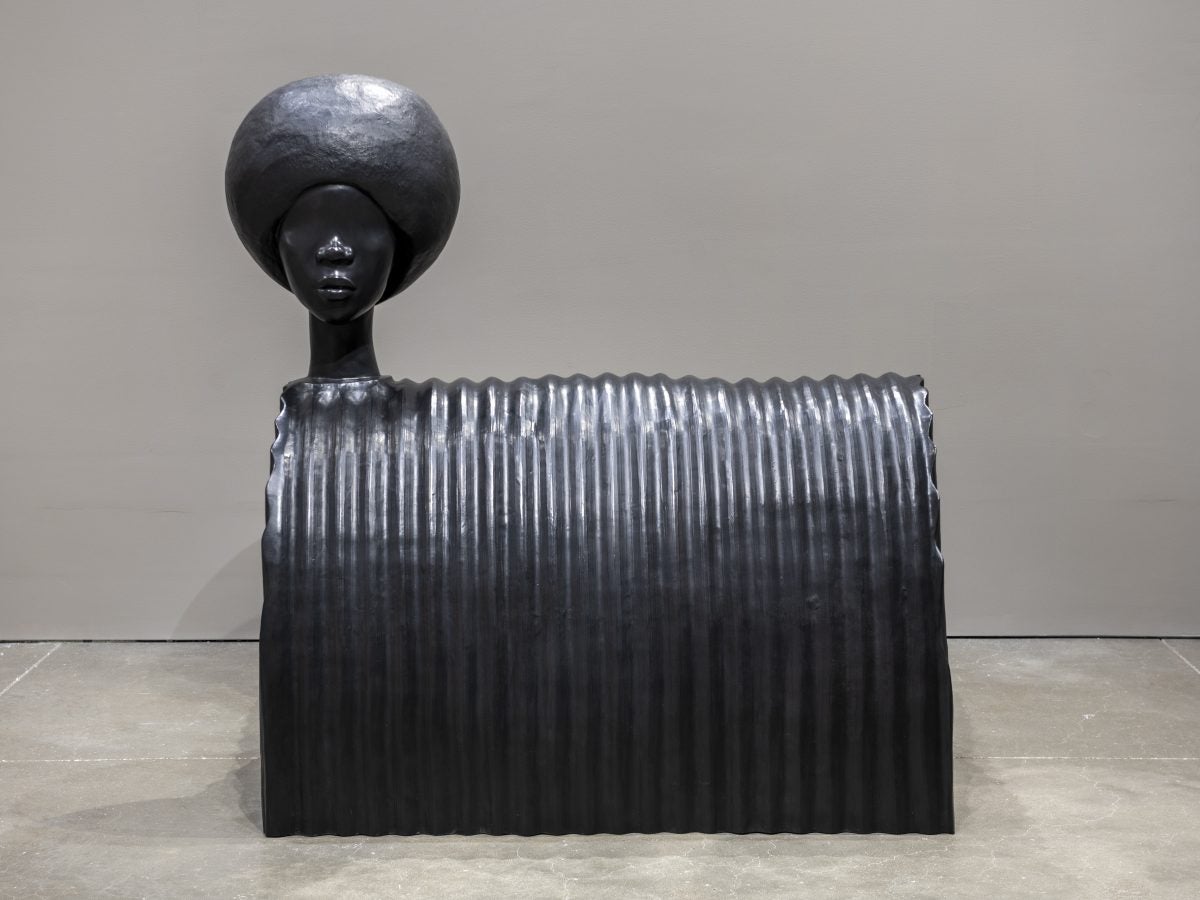
A Black woman is washing clothes overlooking the South Boston Harbor. Her tight coils have natural highlights from sunbeams streaming through a nearby window. Her feet wade in a reflecting pool mirroring her essential but discarded labor.
She sprung from the mind of Simone Leigh, an artist who fuses eighteenth-century political references, 1980s household staples, and artisan traditions from the American South to raise questions about Black femme subjectivity.
Leigh fashioned the work of “bronze, steel, metal, filtration pump, and water,” titled Last Garment, after souvenirs of Jamaican women washing clothes sold to tourists.
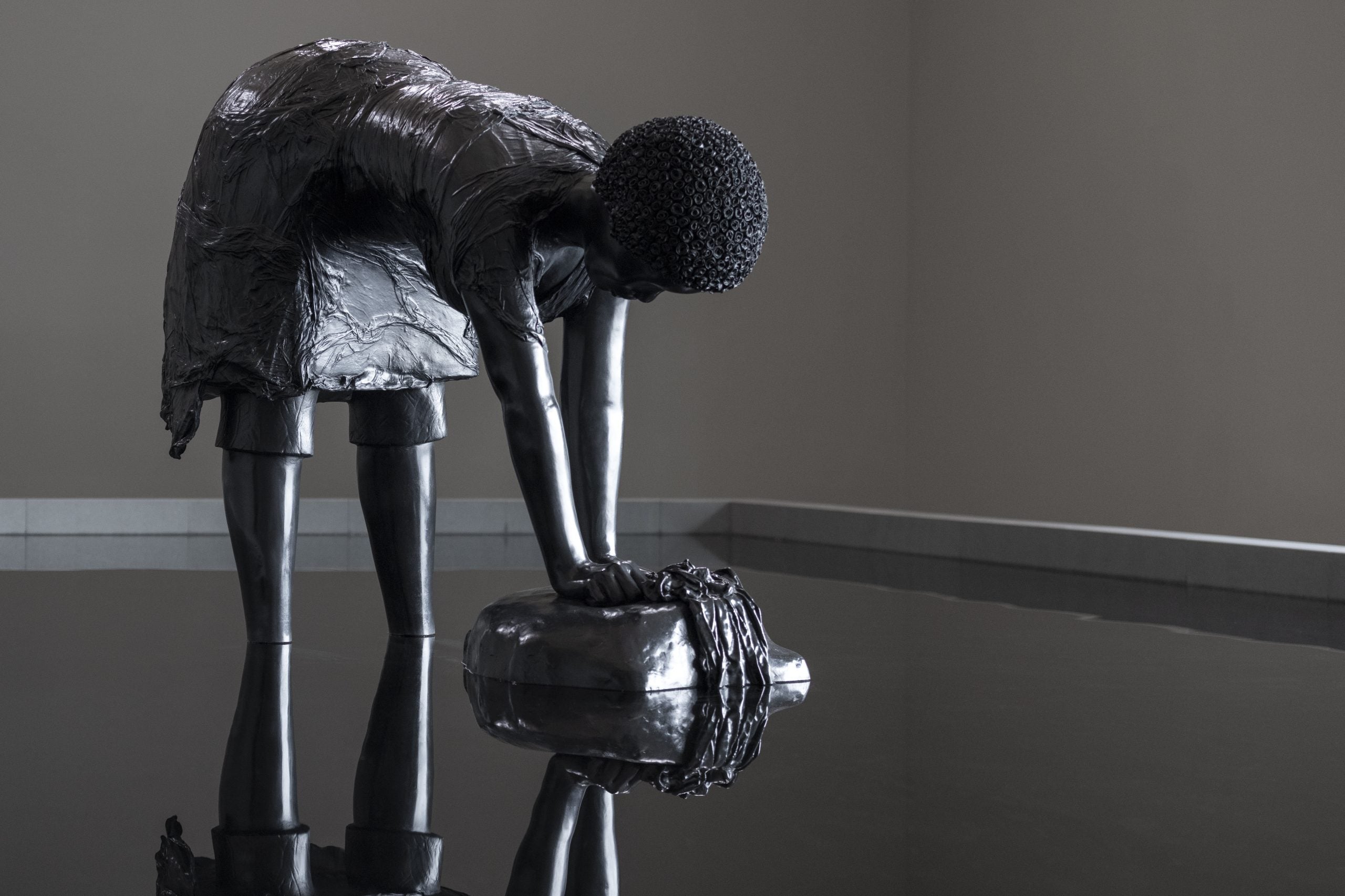
“Her gaze is averted, and she can look at her own reflection even while she might be going through this experience of being part of a souvenir that is used to create troupes about the Black body,” Leigh told ESSENCE about Martinique at a preview of the exhibition.
The artist infuses social practice into her sculpture, video, and installation work, including large pieces like Last Garment. She sees the “kiln as a metaphor for transformation.”
Village Series features cornrows finished in an ash glaze from North Carolina. Cupboard IX features raffia, one of the many materials Leigh has mastered throughout her practice.
Leigh’s interest in “modernism’s relationship to African art” can be seen in Sentinel IV. The show opens with “Cupboard,” a mesmerizing figure of an armless and eyeless Black woman with alluring lips and a beautiful nose.
“This has become a kind of motif for me, this kind of presentation of the body,” Leigh said about “Martinique,” a cobalt blue figure of a woman in the “eternal pose.” The soft-spoken artist stroked her chin with the tips of her white nails as she spoke.
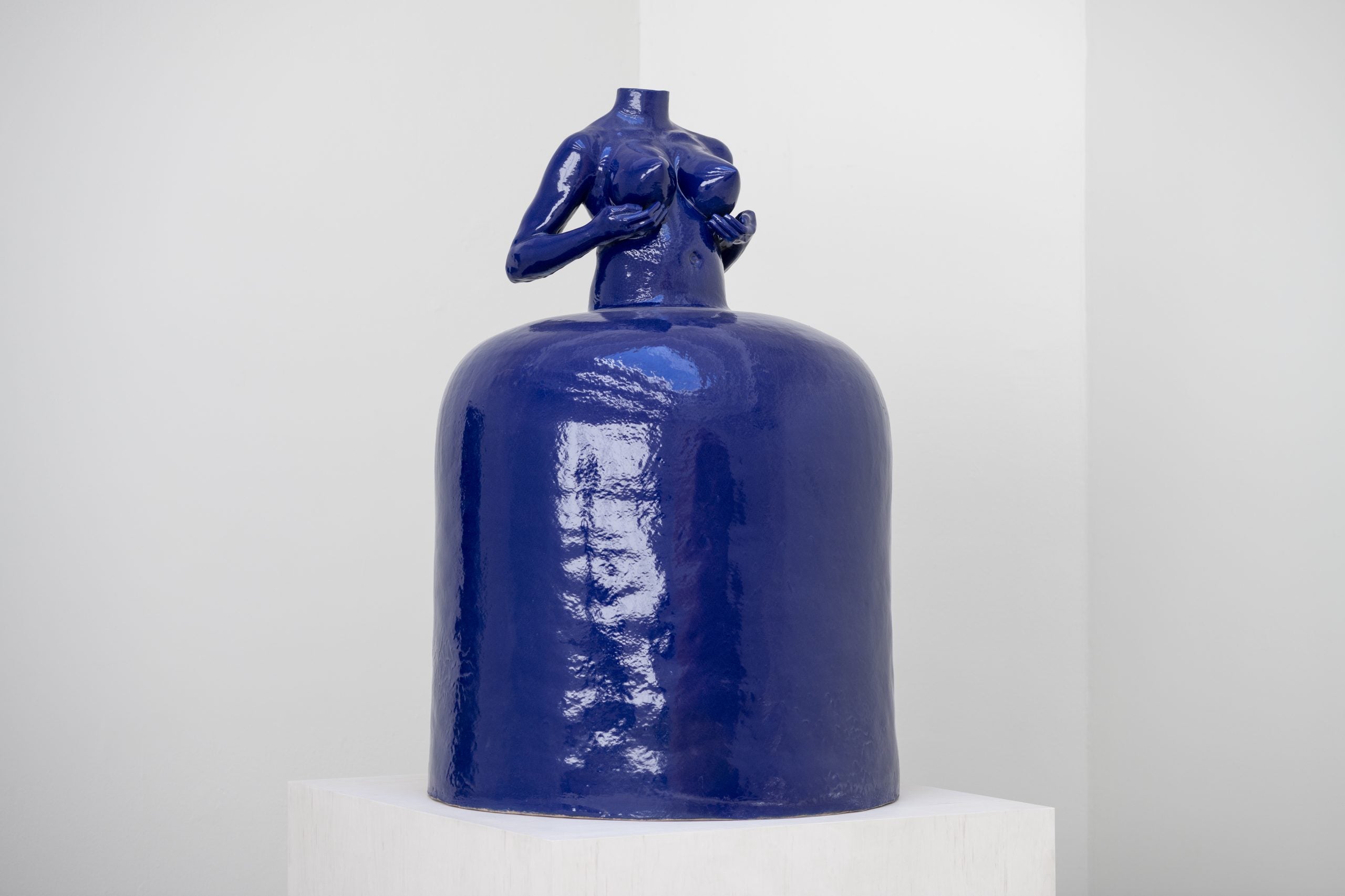
Leigh, already an accomplished star behind works like Brick House and The Waiting Room, had a successful showing at the 59th International Annual 2022 Venice Biennale. The Institute of Contemporary Art/Boston opened a comprehensive survey of her work on April 6. Its programming includes partnerships with Boston’s public schools, the Atlanta University Center Art History + Curatorial Studies Collective at Spelman College, and Frugal bookstore, Boston’s only Black-owned bookstore.
“We and everyone else should have done it sooner,” said Jill Medvedow, Ellen Matilda Poss Director of the ICA, about the exhibition. “Simone Leigh’s complex and profoundly moving work honors the agency and ideas of Black women.”
The touring show includes ten pieces exhibited in the U.S. Pavilion and over thirty-five pieces from her career. Its pieces range in scale from the arresting “Satellite” to the “Head with Cobalt.” After it leaves the Institute of Contemporary Art, it will travel to the Hirshhorn Museum and Sculpture Garden in Washington, D.C., before being shown in a joint presentation at the Los Angeles County Museum of Art (LACMA) and California African American Museum (CAAM).
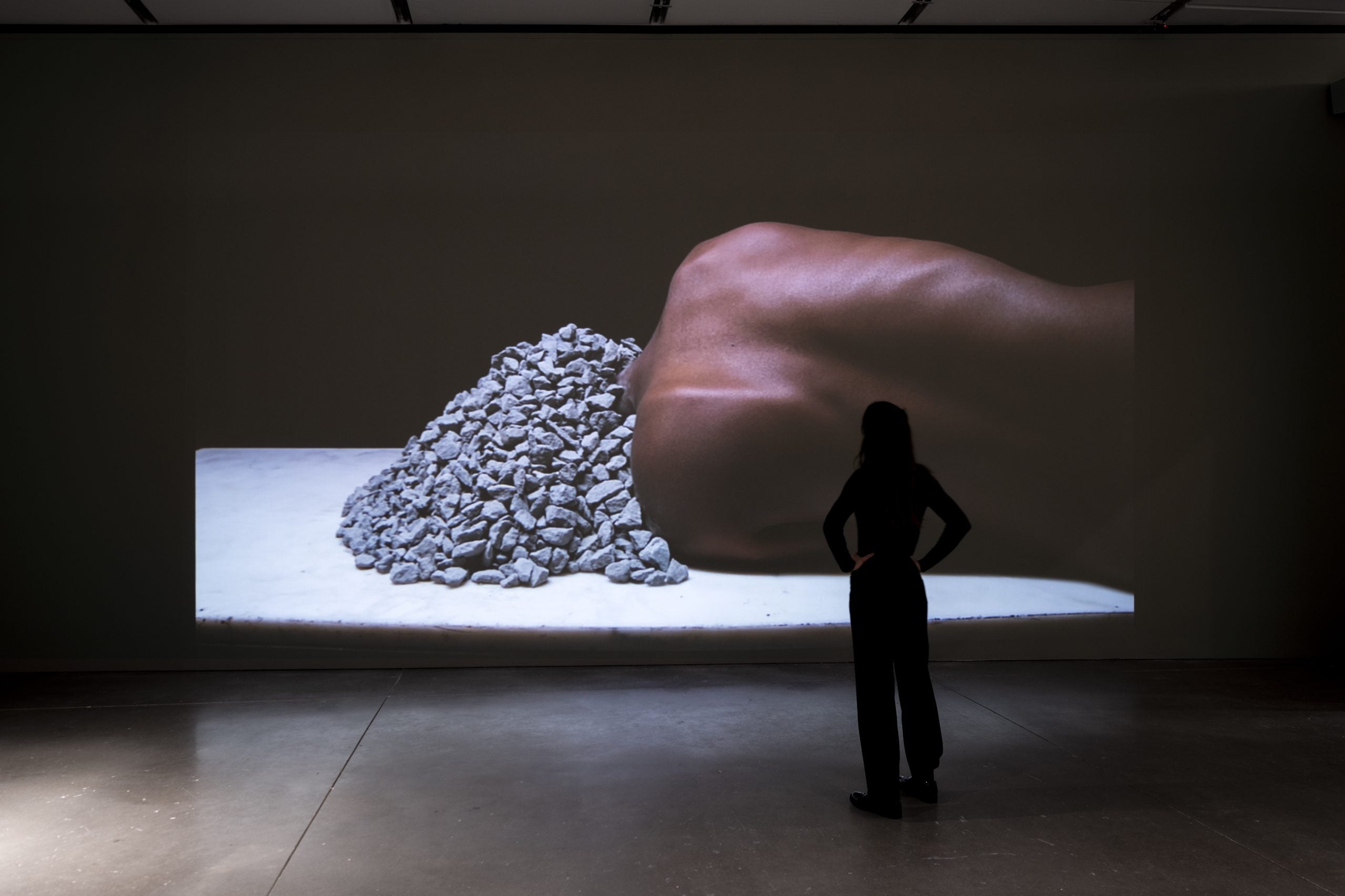
Nearby Martinique sit two knowing sphinxes created for the Venice Biennale. In the next room are Sentinel and Jug. She smiled at the “wonderful memory” of creating Sentinel in a heatless space during a freezing winter.
Jug felt unfinished until Leigh found an element that illustrated its message perfectly, a handle.
“When I added that handle, it felt like a very important moment in my life and in my work,” she said.
White Teeth (For Ota Benga) speaks to what happens to the real people behind the commercialization of the Black body that inspires souvenirs like those that inspired Last Garment. Ota Benga was a Black man who was kept in a cage at the Bronx Zoo and eventually committed suicide from the resulting depression after being freed. “The thing that made him so commercially viable and exciting was also what led to his demise,” said Leigh.
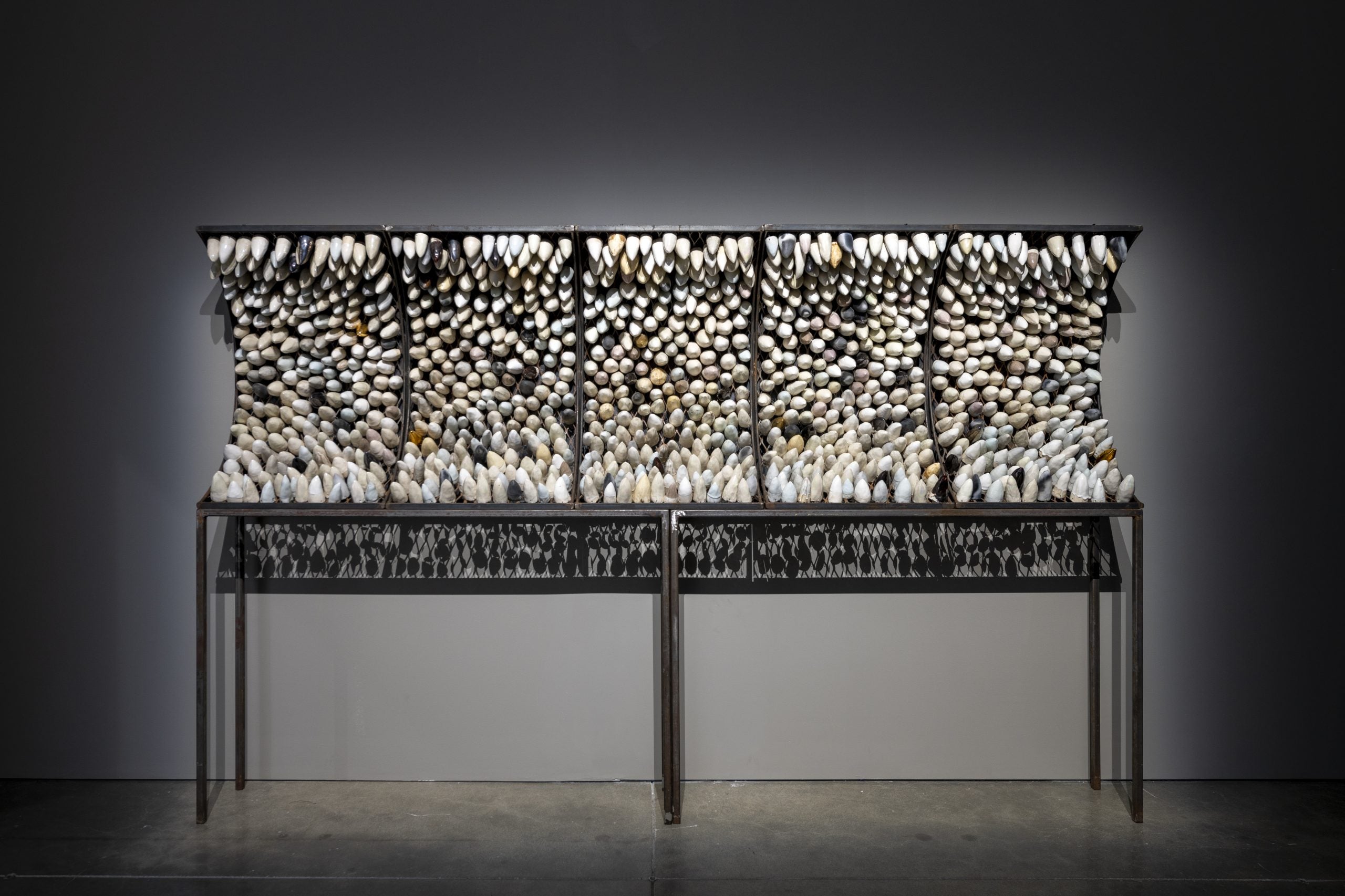
Leigh is personally impacted by the research required to tell stories in her work. She confessed to having a ”fraught relationship to anthropology.”
Hurtful stereotypes and painful truths populate the history books she consults to bring pieces to life. Confronting ideas like the “noble savage” is not easy.
“It involves you having to look at your own debasement,” she said.
The fruits of those “uncomfortable” moments of invisible labor shows up in choices like the unexpected pairing of porcelain and plastic in Slipcover. The piece reminds audiences of the treasures protected in aunties’ living rooms around the world.
Leigh has been seeing Black women clearly for over twenty years; now they can see more of her in a well-earned celebration of her commitment to honoring their contributions.
“Simone Leigh” is on display at the Institute of Contemporary Art/Boston. It runs through September 4, 2023. Learn more about the show here.





